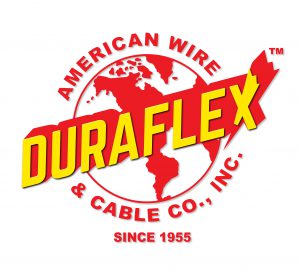
Frequently Asked Questions on wires and cables:
1. What are the salient differences between Copper and Aluminum conductors?
Copper is a commonly used material for conductors. It has higher conductivity and comparatively heavier than Aluminum, and usually costs more. Aluminum can match copper’s conductivity by increasing the size or number of cables uses.
2. Do solid conductors have better conductivity than the stranded ones?
Yes, to a certain extent, although the variation is considered to be negligible. The choice would depend on the level of flexibility needed in the application of wires and cables. Stranded conductors are more flexible and are more preferred when applied to winding installation. Due to its lower flexibility, solid conductors are usually produced in smaller sizes, e.g. 8 AWG sizes and lower.
3. What is the importance of insulation in wires and cables?
The electrical properties of the wires are significantly influenced by the insulation. High-frequency communication cables, for example, would have Polyethylene (PE) as insulation because the capacitance and attenuation are minimal if this type of thermoplastic were used. On top of the wire and cable application, factors such us heat and flame resistance; moisture resistance; mechanical toughness; resistance to ionization; flexibility; and the usage life determine the insulation. The other insulation can be XLPE (chemically cross-linked PE Compound), Polyvinyl Chloride (PVC), and Ethylene-Propylene (EP) Rubber.
4. What are to be considered in selecting wires and cables?
In selecting a wire, the following should be considered:
- Installation – the area of installation whether indoor, underground, outdoor or aerial is critical in the choice of wire because the exposures to various elements may affect the performance and safety of the wire. This is where the characteristics of insulation play an important part.
- Voltage Rating – determines the size of the conductor, and the thickness and type of insulation.
- Conductor Size – the current load, KVA load, and kilowatt load are governed by voltage drop besides the heating and power factors. These must be known before the conductor size can be determined.
- Ampacity Limitation – the maximum current a wire or cable can safely carry without exceeding the capacity of the insulation or jacketed material.
- External Condition – the presence of other sources of heat located in the installation, such as pipes, corrosive agents, structural materials, and other cables can cause increase in the temperature of wire.
5. How do we properly specify an order for wires and cables?
In ordering wires and cables, the following should be specified:
- Type of Wire
- Size
- Number of Conductor (for Multicore)
- Voltage Rating
- Type of Insulation
- Maximum Operating Temperature
- Color
- Length/Quantity
- Insulation thickness (Insulation Level for Power Cable)
- Type of Protective Covering
- Type of Conductor
a.) Copper/Aluminum
b.) Solid or Stranded
c.) Total length/individual cutting length
6. What are the commonly used wires for lighting and fixtures for residential, commercial, and industrial installation?
TW, THW, THHN/THWN wires are most commonly used for lighting and fixture purposes.
7. What is the importance of colored insulation?
The color of the insulation serves as a guide in circuit identification and for easy wiring connection.
8. What type of wire is used for extension purposes?
Duracord and Duplex Cord (SPT) are used for extension purposes.
9. What is the recommended wire for outdoor wiring?
For outdoor wiring, use PE insulated wire because of its weather-resistant characteristics. On the other hand, it is recommended to use PVC insulated wire for its flame retardant properties for indoor wiring.
10. What are the general characteristics of a safe wire?
A safe wire must have the following characteristics:
- Right conductor size
- Proper thickness of insulation
- Virgin copper with 99.9% conductivity for copper wiring
- Pure plastic insulation
- Must have passed stringent quality control
